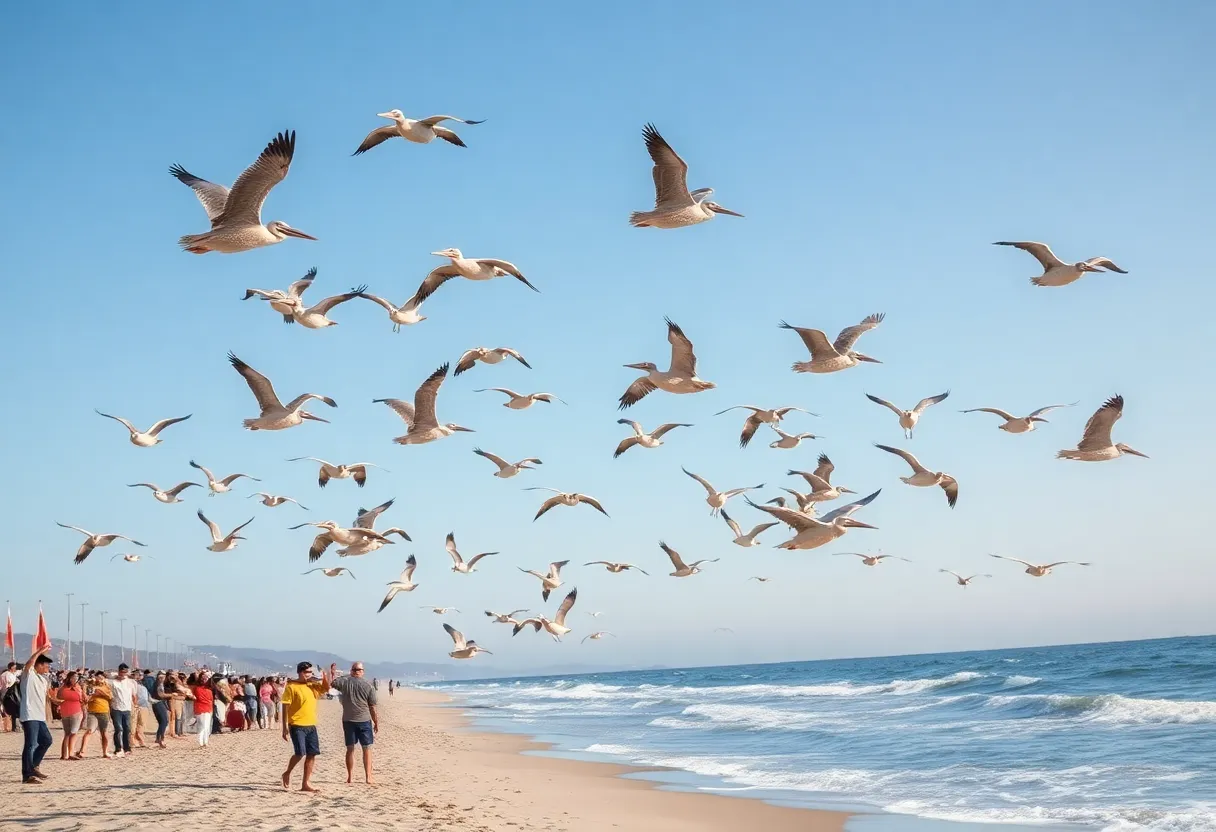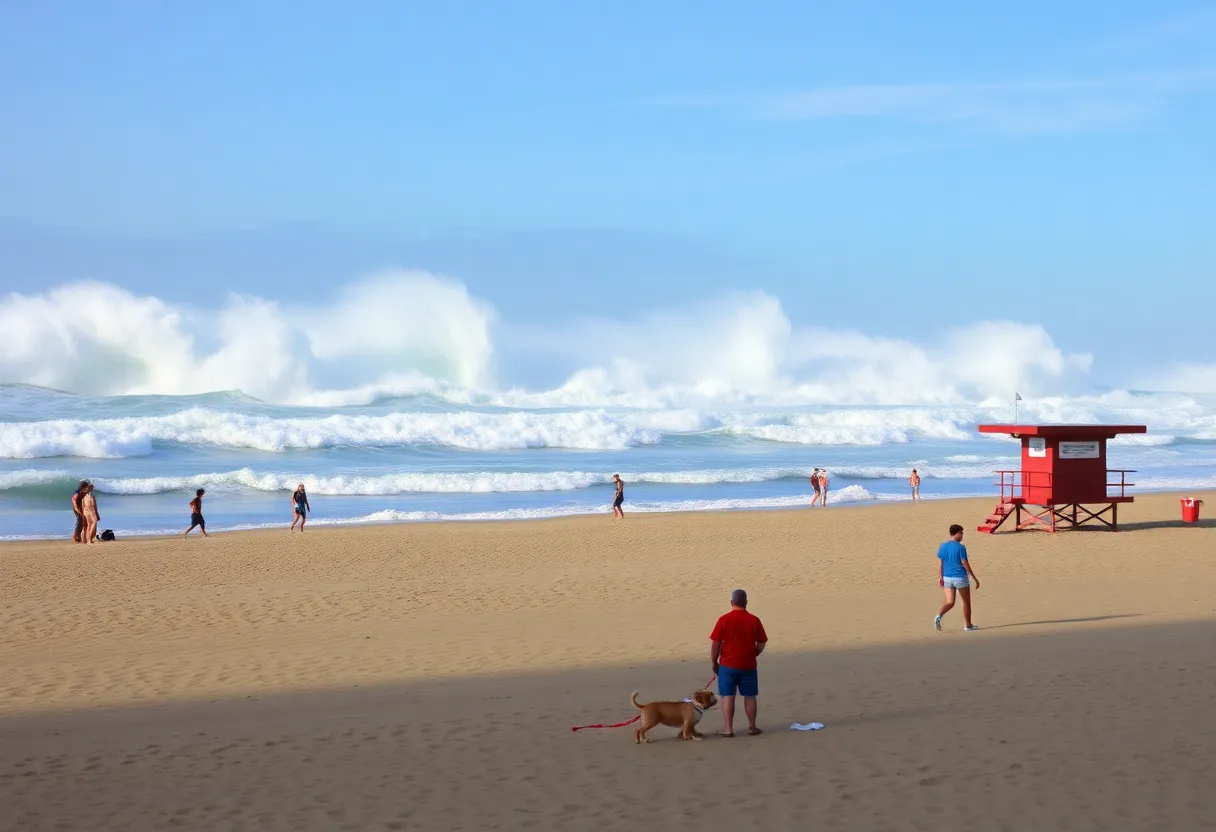News Summary
In Southern California, a flock of 13 brown pelicans has been released back into the wild after being rescued from a toxic algal bloom. This year’s bloom has been severe, impacting marine life along the coast. The Wetlands and Wildlife Care Center played a crucial role in treating the pelicans, allowing them to return home. The release event attracted community members, including junior lifeguards, and served as a reminder of the importance of wildlife care. The situation highlights ongoing concerns regarding the health of marine ecosystems and the impact of harmful algal blooms.
Exciting Pelican Release in Southern California
It was a heartwarming sight in Southern California on Wednesday as a flock of 13 brown pelicans finally spread their wings and soared back into the wild. These magnificent birds had been through quite an ordeal after being caught up in the recent toxic algal bloom that swept through the region, which began earlier this year in January. This year’s bloom has been particularly devastating, killing thousands of sea animals all the way from Central California to Alaska.
A Tough Year for Sea Creatures
This year’s algal bloom was sadly reported as the deadliest since 2015, affecting not just pelicans but also a variety of sea creatures, including several sea lions. These affected sea lions posed dangers to beachgoers and raised concerns about public safety, leading many to keep a watchful eye on their beach trips. Thankfully, the hardworking team at the Wetlands and Wildlife Care Center in Huntington Beach stepped up to care for the pelicans, providing them with the necessary treatment and support to get them back on their feet and ready for their return to nature.
Making a Community Event of the Release
The pelican release took place just south of the pier, and it wasn’t just the birds that were excited; community members gathered to witness this special moment. Young junior lifeguards from Huntington Beach took part in the excitement by helping to unzip the cages, allowing the pelicans to waddle out to shore. It was a sight to behold as most of the pelicans took flight, leaving onlookers awestruck. However, not all of them were ready for takeoff just yet; two pelicans decided to stay behind on the sand and were returned for a little more treatment.
Understanding the Algal Bloom Impact
What caused this distressing situation for our feathered friends? The answer lies in a toxin called domoic acid, which occurs in algal blooms and can lead to abnormal behavior and seizures in marine animals. Experts are increasingly concerned as this marks the fourth consecutive year of harmful algal blooms along the Southern Californian coast. In fact, reports of sickened sea lions and dangerous interactions with aggressive sea lions have made headlines, prompting surfers and beachgoers to be more vigilant while enjoying the ocean.
The Ongoing Struggles of California’s Wildlife
According to the Marine Mammal Care Center, this algal bloom might be recorded as “the longest, most toxic, and deadliest” that the area has ever faced. Almost 200 seabirds were rescued in total, a number considered abnormally high for this time of year. Thankfully, by early June, levels of toxic algae began to decline, paving the way for the safe release of the pelicans.
Exploring the Causes
So, what sets off these dangerous algal blooms? Various factors come into play, including water and wind patterns, as well as an overproduction of nutrients in the water. With climate change now at the forefront of discussions, scientists warn that we might see more frequent and severe algal blooms due to warmer water temperatures and changing nutrient compositions. As the conditions of our oceans shift, the risk of harmful algal blooms is poised to increase, raising concerns for both marine life and beachgoers alike.
In a heartwarming twist amid the challenges presented by the algal bloom, the successful release of the pelicans serves as a reminder of the importance of community involvement in conservation and wildlife care. With delighted spectators witnessing the triumphant return of these magnificent birds, it’s a moment for hope and renewed commitment to protecting our natural environment.
Deeper Dive: News & Info About This Topic
HERE Resources
Huntington Beach Faces Avian Crisis with Sick Birds
Huntington Beach Hosts Wildlife Baby Shower Fundraiser for Pelicans
Seabirds in Distress in Huntington Beach: Community Needed
Additional Resources
- Los Angeles Times: Pelican Release After Deadly Algal Bloom
- Wikipedia: Toxic Algae
- ABC News: Toxic Algae Bloom in Southern California
- Google Search: Toxic Algae Bloom Southern California
- Surfline: Toxic Algae Bloom Hits SoCal
- Encyclopedia Britannica: Algal Bloom







